Okay, so many athletes know that the best protein powders can be great tools for hitting your protein counts each and every day, but have you considered the other sources of protein across your dietary regimen? High-protein foods are plentiful when looking at whole-food options, but a lot of protein only goes so far when it’s paired with unhealthy counts in terms of saturated fats and high calories. As such, it can be helpful to opt for lean protein options that feature a high-quality macro split without excessive calories.
A diet filled with high-protein, low-calorie meals can fuel muscle repair and growth, keep you feeling fuller for longer, and help muscle preservation as you age. A high-protein diet may even positively affect your mood when compared to a lower intake. (1) Plus, lean protein without excessive calories isn’t hard to find — if you know what you’re looking at. We’ve compiled our favorite low-calorie, high-protein food options in this guide to help you curate the perfect diet that matches your fitness goals.
What Is Protein and Why is it Important?
Protein, at its most basic definition, is an organic compound made up of multiple amino acids, or the “building blocks” of your body. Amino acids are essential nutrients and serve as the basis for creating, repairing, and maintaining tissues such as muscle, organs, hair, and nails. There are 20 different amino acids you need to form proteins — nine of which you must get from your diet. These are typically referred to as essential amino acids (EAAs).
High-Protein, Low-Calorie Foods
When deciding which high-protein foods to eat, it’s smart to focus on meal options that meet the following criteria:
- Rich in essential amino acids, so you’re getting the highest quality protein in each serving
- Mostly protein with minimal carbs and fats
- Something you enjoy eating regularly in order to avoid flavor fatigue
You may find that a few of the protein-rich items on this list are already staples of yours. That’s great news. As such, variety and enjoyment are essential for sound nutrition — you don’t want to burn out while constantly eating the same dish, even if it is a good source of protein that also helps limit your calorie intake.
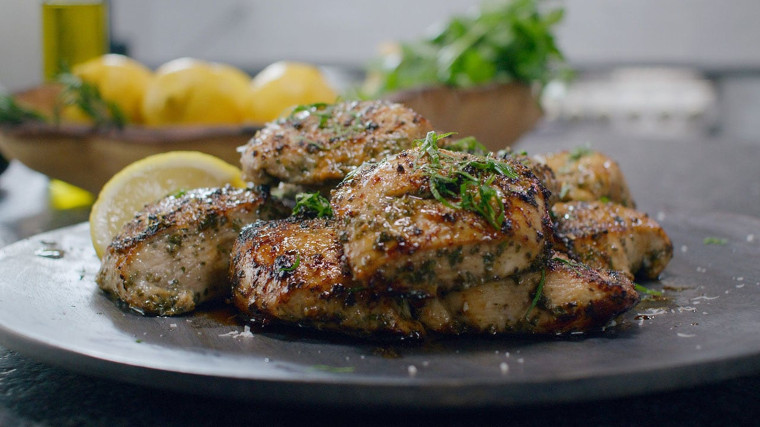
Ready to serve up some tasty dishes for better health and wellness? Let’s look at your options and choose some high-quality protein sources.
High-Protein, Low-Calorie Foods
- Chicken
- Turkey
- Egg Whites
- Salmon
- Shrimp
- Tuna
- Cod
- Lean Beef
- Lamb
- Meat Jerky
- Pork
- Low-Fat Greek Yogurt
- Cottage Cheese
- Tempeh
- Tofu
- Edamame
- Whey Protein Powder
- Casein Protein Powder
- Vegan Protein Powder
- Protein Bars
Editor’s Note: The protein and calorie counts for each protein option listed below are in reference to a 100-gram serving based on the information provided by MyFitnessPal. (9)
Chicken
As one of the most iconic high-protein foods available today, chicken is incredibly versatile. You can prepare chicken via grill, pan fry, slow cook, baking, and more. Plus, there are a wide range of cuts to choose from, including breasts, wings, thighs, canned, minced, etc. Be mindful, though, that your chicken cut of choice can differ in terms of its protein-to-healthy-fats ratio.
The following metrics describe a 100-gram serving of boneless, skinless chicken breast:
- Protein Per 100 Grams: 22.5g
- Calories Per 100 Grams: 120
Turkey
Like chicken, turkey is a stellar source of protein that comes in a range of options. Turkey provides a solid amount of vitamin B6 and magnesium, making it another fantastic option.
The following metrics are for a 100-gram serving of cooked turkey breast with the skin included:
- Protein Per 100 Grams: 28.3g
- Calories Per 100 Grams: 169
Egg Whites
Though whole eggs are a powerhouse of nutrition, the egg white is a lean and dense source of protein. With the yolk removed, egg whites boast a high amount of protein, few calories, and no carbohydrates or fat. They’re surprisingly filling and diverse, too. They can be mixed into a range of recipes, including omelets, oatmeal dishes, breakfast muffins, and even homemade baked goods.
Here’s how many calories and how much protein to expect from a 100-gram serving of egg whites:
- Protein Per 100 Grams: 10.7g
- Calories Per 100 Grams: 52
[Related: How Many Grams of Protein Are in an Egg?]
Salmon
Despite being a little higher in fat, salmon is a rich and nutritious source of protein without an overload of calories. The fish also contains vitamin B12, iron, potassium, omega-3 fatty acids, and vitamin D.

Here’s how much protein and calories you can expect from a 100-gram serving of this nutritious seafood dish:
- Protein Per 100 Grams: 18.519g
- Calories Per 100 Grams: 88
Shrimp
Though not as rich in micronutrients and essential fats as other seafood options, shrimp make up for this with how lean and protein-dense they are. The FDA recommends eating roughly 3 ounces of seafood per serving, which rounds out to roughly 85 grams of shrimp. (10)
To keep things even-keeled, below are the protein and calorie counts for a 100-gram serving of these tasty sea-dwelling treats.
- Protein Per 100 Grams: 13.61g
- Calories Per 100 Grams: 71
Tuna
Like shrimp and salmon, tuna can be one of the best protein sources for athletes with few tag-along nutrients. One thing to be mindful of, however, is tuna’s mercury content. As a general rule, adults will want to avoid eating tuna steak more than twice per week.
Here’s how a 100-gram tuna steak shakes out in terms of protein and calories:
- Protein Per 100 Grams: 32.474g
- Calories Per 100 Grams: 64
Cod
Though low in omega-3s, cod offers many of the same benefits as fattier cuts of fish. This white fish option is a high-quality source of protein that is rich in vitamin B6 and contains a meaningful amount of vitamin D. It’s also a voluminous cut of fish, boasting relatively few calories. This makes for an excellent protein source while cutting weight.
The following metrics are for a 100-gram piece of cod. Read below to determine whether these protein and calorie counts are optimal for your specific goals.
- Protein Per 100 Grams: 22.83g
- Calories Per 100 Grams: 105
Lean Beef
Like chicken, there are plenty of health benefits associated with adding lean beef to your diet. This lean meat option is available in varying cuts and can be prepared in countless ways, too, meaning there’s plenty of room to experiment with different dishes. Tacos? Steaks? Burgers? Stew? The opportunities are virtually endless.
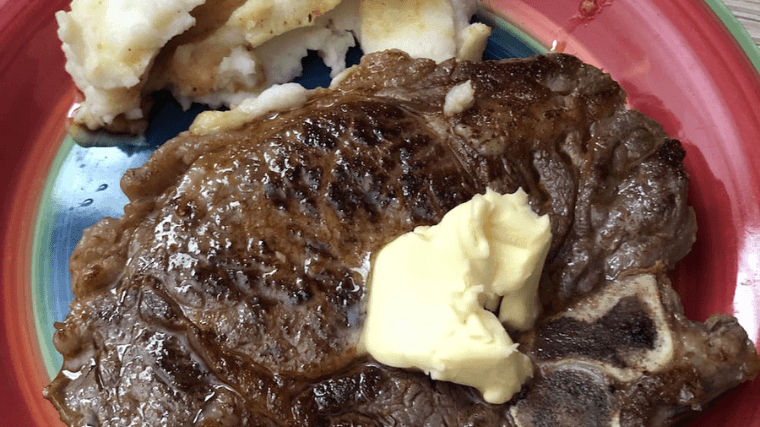
Beef also contains a good concentration of nutrients, like iron and cobalamin, which are essential for proper brain development, red blood cell formation, and transporting oxygen. Below are the protein and calorie counts for a 100-gram top sirloin steak — one of the more popular lean beef cuts.
- Protein Per 100 Grams: 22.09g
- Calories Per 100 Grams: 131
[Related: Grass-Fed Vs. Grain-Fed Beef]
Lamb
While it’s typically more expensive than beef, lamb makes for an excellent substitute since it’s also high in iron and cobalamin. Lamb also has a similar protein-to-fat ratio while having relatively low calories for how much protein you’re getting. With a mild and slightly sweet flavor, lamb adds an interesting twist to staples like stews, roasts, and casseroles.
Here’s how much protein and calories you can expect from a 100-gram serving of lamb:
- Protein Per 100 Grams: 21g
- Calories Per 100 Grams: 250
Meat Jerky
If you’re looking for a high-protein snack while on the go, meat-based jerky can be an excellent solution. Meat jerkies have the same nutritional profile as their hydrated counterparts, like steak or turkey breast. However, that dehydration can lead to less satiety overall, so be careful not to overeat. Meat jerky is typically available in beef, chicken, or turkey varieties.
Below are the protein and calorie counts for your typical 100-gram serving of beef jerky:
- Protein Per 100 Grams: 52.91g
- Calories Per 100 Grams: 282
Pork
Though it’s a little higher in fat than many cuts of meat, pork is still an excellent source of essential amino acid-rich protein. Pork is also high in vitamin B6 and vitamin D, making it a useful source of micronutrients.
While there are multiple pork cuts available for athletes, the following metrics are for 100 grams of one of the more popular meal options — the pork chop.
- Protein Per 100 Grams: 20.283g
- Calories Per 100 Grams: 115
Low-Fat Greek Yogurt
After meat, fish, and poultry, low-fat Greek yogurt can be a serious contender for one of the best sources of protein. Plus, this satiating treat contains loads of B vitamins and offers respectable amounts of calcium, vitamin A, zinc, and vitamin C. Low-fat Greek yogurt is also surprisingly versatile. You can use this dish as a base for overnight oats, parfaits, and various frozen treats as well.
Be sure to read your specific yogurt’s nutrition facts, though, prior to purchase — while our metrics below dictate a general protein and calorie count, the metrics can vary from brand to brand.
- Protein Per 100 Grams: 8.64g
- Calories Per 100 Grams: 95
[Related: Best High-Protein Yogurts]
Cottage Cheese
Like Greek yogurt, cottage cheese is an excellent source of protein that’s convenient and flavorful. It’s flexible enough to pack for work as a high-protein meal on its own, requires minimal preparation, and can be incorporated into various recipes. It has a well-rounded micronutrient profile, as well, containing vitamin B12, selenium, phosphorus, and calcium.

You also have the option of choosing between full-fat and low-fat cottage cheese. The macros will differ, naturally, but we’ve included the protein and calorie counts for low-fat cottage cheese below:
- Protein Per 100 Grams: 11.50g
- Calories Per 100 Grams: 80
Tempeh
Tempeh is a fantastic protein to use as a base for your lunch and dinner, especially if you follow a plant-based diet and thus avoid animal or dairy products. Like a lot of meat and poultry recipes, tempeh works well with staple meals, such as stir-fry recipes and pasta dishes. Plus, with its high iron and calcium content, it works as a wonderful replacement for animal-based proteins.
When looking to add tempeh to your diet, here’s how much protein and calories you can expect from a 100-gram serving:
- Protein Per 100 Grams: 19.894g
- Calories Per 100 Grams: 195
Tofu
Much like tempeh, tofu can be a great option for vegan or veggie-based athletes. It offers unique benefits, too. Tofu contains a good amount of fiber, is rich in iron and calcium, and has a slightly longer “shelf life” than meat and poultry. Tofu can last up to a week after opening, rendering it both convenient and nutritious.
A 100-gram serving of tofu contains the following protein and calorie counts:
- Protein Per 100 Grams: 7.17g
- Calories Per 100 Grams: 61
[Related: Vegan Diet for Athletes]
Edamame
Another excellent source of plant-based protein, edamame truly is a nutritional powerhouse. Besides containing a high amount of protein and a low calorie count, edamame also offers a solid amount of fiber, a lot of vitamin K1, and an entire day’s worth of folate. Edamame works wonderfully as both a snack and ingredient within a main meal, making it easy to incorporate into your diet.

Below you’ll find the protein and calorie counts of this plant-based option:
- Protein Per 100 Grams: 10.667g
- Calories Per 100 Grams: 133
Whey Protein Powder
If you’re looking to turn to supplements for your protein intake, the best whey protein powders can be optimal additions to your diet for strength and weight management. These supps are dense with essential amino acids, are cost-effective in terms of price per serving, and can serve as convenient options for on-the-go nutrition.
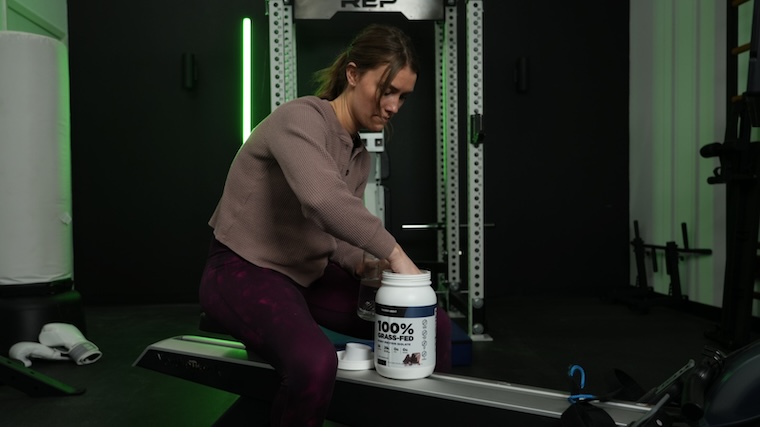
You’ll have to choose between different types of protein that can vary in terms of filtration methods and overall macro counts. For reference, though, we’ve included the protein and calorie counts of our favorite whey protein powder — Transparent Labs Whey Protein Isolate.
- Protein Per Serving: 28g
- Calories Per Serving: 120-150
Read our full Transparent Labs Whey Protein Powder Review.
Casein Protein Powder
Like whey, casein is abundant in essential amino acids, though it comes with a twist: it’s far slower to digest. As a result, casein has a few unique perks. It works well before a period of fasting, such as before bed, since it can be particularly satiating over longer periods. When you need fast-acting protein, however, such as pre- or post-workout, whey protein can be more ideal.
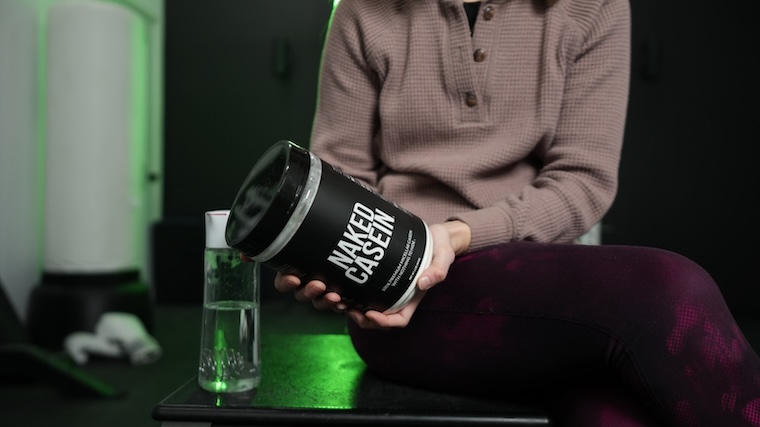
Again, casein protein can vary in protein and calorie counts from brand to brand, so we’ve included one of the best casein proteins — Naked Micellar Casein — as a point of reference below. Be sure to always read the nutritional facts of your protein powder before making a purchase.
- Protein Per Serving: 26-27g
- Calories Per Serving: 110-150
Vegan Protein Powder
If you’re lactose intolerant or follow a plant-based diet, the best vegan protein powders can substitute nicely for whey or casein powder. When looking for a vegan protein powder, be sure to seek a combination of rice and pea protein — this blend is easily digested and absorbed yet provides a great blend of essential amino acids.
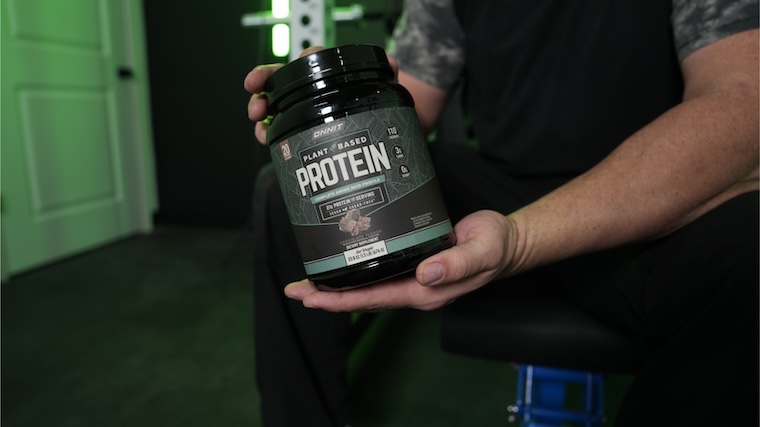
Again, vegan protein powders can vary from brand to brand when it comes to calories and protein counts, so for a quick look at the category, we’ve included the metrics of Onnit’s Plant-Based Protein.
- Protein Per Serving: 20g
- Calories Per Serving: 100-110
Protein Bars
If you’re not a fan of protein shakes, but need an easy and accessible way of adding protein to your diet, a protein bar may be the perfect solution for you. As such, finding a good high-protein, low-calorie bar can be difficult. Some are an excellent and convenient source of protein, whereas others are mostly carbs, fats, and a load of calories with a sprinkling of protein.
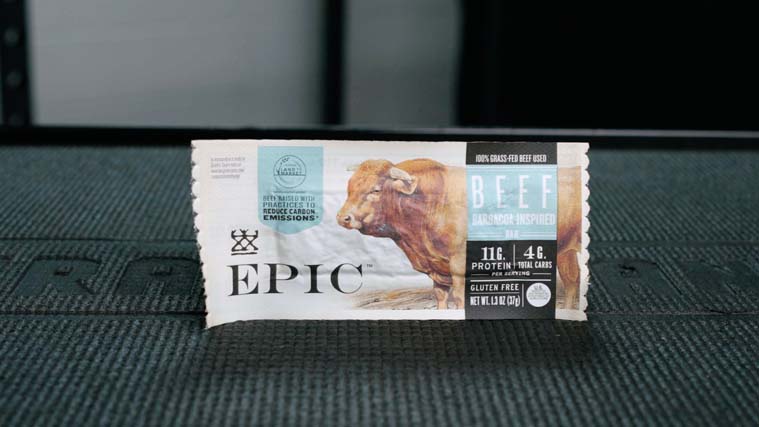
While we’ve previously shared our picks for the best protein bars, we’ve included metrics on EPIC protein bars below:
- Protein Per Serving: 7-11g
- Calories Per Serving: 70-170
Benefits of Protein
Besides being essential for the repair and growth of muscle mass and other bodily tissues, protein offers a few unique benefits. Here are a few of our favorite perks associated with this vital macronutrient.
Thermogenic Properties
Protein is more thermogenic than carbohydrates and fats. The thermic effect of food (TEF) is the number of calories burned during digestion. During that process, 20 to 30% of the calories you consume from protein are “spent” on digestion. In contrast, the TEF of carbohydrates and fats is just 5 to 10% and 0 to 3%, respectively. (2)
If, on a given day, you were to replace 500 calories’ worth of dietary fat with protein, you may burn up to an additional 150 calories. Of course, there are other variables in play — how processed a food is can also affect TEF, for instance. (2) It’s important to get enough of each macronutrient in your diet, but this example shows just how significant a higher protein intake can be.
Stay Fuller, Longer
Plain and simple, protein is more filling than the other macronutrients. According to research published in The American Journal of Clinical Nutrition, eating a high-protein, low-fat diet helped subjects feel fuller for longer than subjects who had a maintenance level of protein and higher level of fat. (3)

Some athletes may be looking to adjust their nutritional habits to help maintain or build muscle while losing body fat to reach a healthy weight. In that case, increasing your satiety after meals can help with emotional and psychological satisfaction surrounding your food.
Even if you’re not interested in losing weight, the sensation of being full can help you develop a more mindful relationship with your food and your body. This can be quite a significant benefit for athletes looking to last longer during training sessions — especially if their digestive systems don’t do well with mid-workout snacks.
[Related: Best Protein Powders for Weight Loss]
Improve Immunity
Eating adequate protein bolsters your immunity. Amino acids support the main components of your immune system, such as B cells and T cells. (4) This, in turn, can help your immune system identify harmful cells within your body. (4)
How Much Protein Should You Eat?
Since everyone’s goals, activity levels, and bodies are different, it stands to reason that there isn’t just one standard protein intake amount to always aim for. If you’re cutting weight, a higher protein intake of 1 to 1.2 grams per pound of body weight can be beneficial. This higher intake supports lean tissue retention during a cut, further increases satiety while calories are restricted, and supports healthy stress levels. (5)
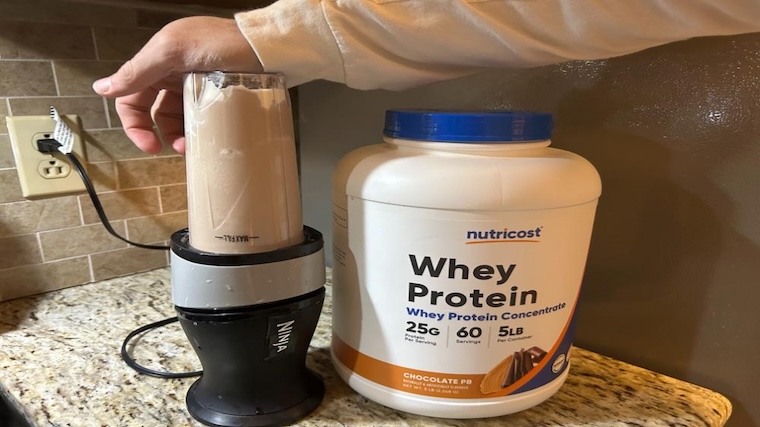
When your goal is to maintain weight, there’s a slightly reduced need for protein. That’s because you’re not in a calorie deficit and thus minimizing the risk of tissue loss. Thus, 1 gram of protein per pound of body weight is often considered sufficient.
Finally, if you’re gaining weight, 0.8 grams of protein per pound of body weight may be adequate. (6) Again, there simply isn’t the same risk of muscle protein breakdown in a surplus as there is in an energy deficit. Plus, once your baseline protein needs are met, strength gains and muscle growth will be fueled by additional carbohydrates, not protein.
To help you figure all of this out in a more accessible way, try out BarBend’s protein intake calculator below. All you have to do is plug in your relevant information.
Protein Intake Calculator
How to Get Enough Protein
Of the three main macronutrients — protein, carbohydrates, and fat — protein tends to be the hardest to consume enough of. Typically, foods rich in protein are the most expensive, require more preparation, and are the least engineered for taste and texture. Practically, then, how can you work around this?
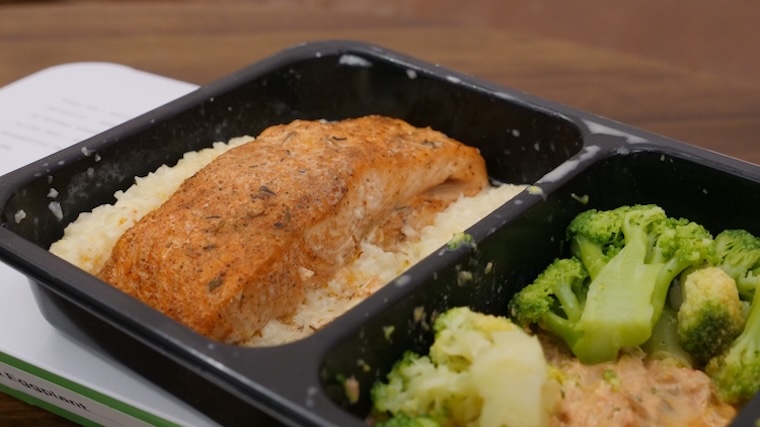
First and foremost, when planning your daily meals, consider building each meal around a protein source. Let’s say you like to eat four meals per day, you’re aiming for 160 grams of protein daily, and you want to consume your protein fairly evenly throughout those meals.
Before adding any carbohydrates or fats, your protein plan may look like this:
- Breakfast: 40 grams of whey protein
- Lunch: 200 grams of chicken breast
- Afternoon Snack: 250 grams of low-fat Greek yogurt
- Dinner: 150 grams of lean ground beef
Once you’ve added your protein sources, you can easily stack other foods on top to fill in your remaining carb and fat allocations. For example, fruits, vegetables, oats, rice or whole grains, and peanut butter or other snacks.
You’ll also want to maintain focus on your preferences and routine. If you know you can prepare your lunch and dinners ahead of time, give priority to cooked options like eggs, red meat, poultry, and tofu. Similarly, if you know that breakfast is always a rush, prepare some overnight oats with protein powder or a protein smoothie ahead of time. Make your meal prep work for you, not against you.
Myths About Protein
Though strength athletes widely will tout the benefits of protein, it still has plenty of myths and misconceptions out there.
Myth: You Can Only Eat So Much at Once
Until recently, many assumed you could only eat so much protein in one sitting. If you eat more than around 30 grams of protein at once, they’d say, you’re wasting your time.
However, it seems to be that the more protein you eat in a single meal, the longer it’ll take to digest and absorb. This seems especially true when you’re consuming slow-digesting protein sources combined with other macronutrients. (7)
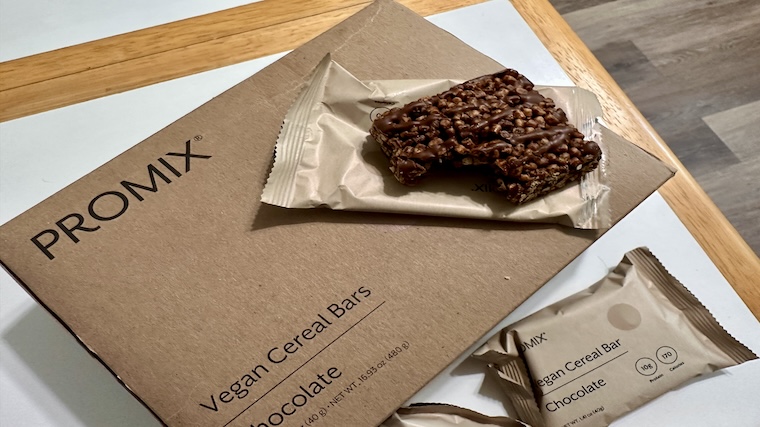
Still, while you needn’t worry if one meal contains a lot more protein than another, it is still a wise decision to spread your protein evenly throughout the day. It’s likely that you’ll feel satiated more often, find it easier to hit your daily needs, and sustain elevated protein synthesis rates. (7)
Myth: Eating Too Much Protein Will Damage Your Kidneys
Nutrition and health scares make for shocking headlines. However, in reality, the idea that too much protein will damage your kidneys has been extended from a half-truth.
Those with existing kidney disease may need to limit their protein intake. According to the National Kidney Foundation, people with existing kidney struggles may want to steer clear of excess protein because their kidneys may have trouble removing extra waste from their blood. (11) However, research suggests that there isn’t necessarily a cause-and-effect link between eating a high-protein diet and developing kidney disease. (8)
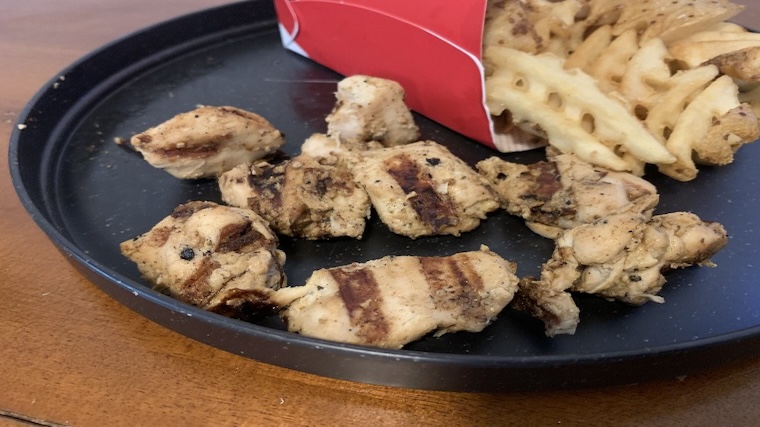
Eating too little protein is problematic, regardless of whether one has kidney disease, because of how essential it is for proper tissue repair and immune function.
Eat Your Protein
Whether you’re cutting or bulking, eating enough protein is crucial to good results. It fuels muscle repair and growth, maintains healthy stress level, and improves the overall satiety of your meals.
Take the time to decide on your favorite sources, understand how you can best incorporate them into your routine, and include enough variety to keep your diet enjoyable and complete. You’ll never miss out on protein’s rich array of benefits again.
FAQs: High-Protein, Low-Calorie Foods
How can I eat a high protein diet with lower calories?
Yes, you can eat a high-protein diet without compromising your calorie counts. You simply need to be mindful of which protein sources you’re consuming and how they relate to your other diet staples. Options like protein powders, chicken, lean beef, and others can be excellent picks when trying to maximize protein intake while keeping your overall calories low.
What are the foods with the highest protein content?
You can find plenty of high-protein foods at your local grocery store, but the idea of “high protein” can be subjective from one diet to the next. In our findings, chicken, turkey, tuna, cod, lean beef, lamb, and pork all feature over 20 grams of protein per 100 grams, but this may not be ideal for your dietary restrictions or nutritional situation. Always be sure to read the nutritional facts of your go-to meals and snacks before adding them to your regular eating routine.
References
- Helms, E. R., Zinn, C., Rowlands, D. S., Naidoo, R., & Cronin, J. (2015). High-protein, low-fat, short-term diet results in less stress and fatigue than moderate-protein, moderate-fat diet during weight loss in male weightlifters: A pilot study. International Journal of Sport Nutrition and Exercise Metabolism, 25(2), 163-170.
- Reed, G. W., & Hill, J. O. (1996). Measuring the thermic effect of food. The American journal of clinical nutrition, 63(2), 164-169.
- Moran, L. J., Luscombe-Marsh, N. D., Noakes, M., Wittert, G. A., Keogh, J. B., & Clifton, P. M. (2005). The satiating effect of dietary protein is unrelated to postprandial ghrelin secretion. The Journal of Clinical Endocrinology & Metabolism, 90(9), 5205-5211.
- Daly, J. M., Reynolds, J., Sigal, R. K., Shou, J. I. A. N., & Liberman, M. D. (1990). Effect of dietary protein and amino acids on immune function. Critical care medicine, 18(2 Suppl), S86-93.
- Helms, E. R., Zinn, C., Rowlands, D. S., & Brown, S. R. (2014). A systematic review of dietary protein during caloric restriction in resistance trained lean athletes: a case for higher intakes. International Journal of Sport Nutrition & Exercise Metabolism, 24(2).
- Phillips, S. M., & Van Loon, L. J. (2011). Dietary protein for athletes: from requirements to optimum adaptation. Journal of sports sciences, 29(sup1), S29-S38.
- Schoenfeld, B. J., & Aragon, A. A. (2018). How much protein can the body use in a single meal for muscle-building? Implications for daily protein distribution. Journal of the International Society of Sports Nutrition, 15(1), 10.
- Martin, W. F., Armstrong, L. E., & Rodriguez, N. R. (2005). Dietary protein intake and renal function. Nutrition & metabolism, 2(1), 1-9.
- Calorie Tracker & BMR Calculator to reach your goals. MyFitnessPal. (n.d.). https://www.myfitnesspal.com/
- Center for Food Safety and Applied Nutrition. (n.d.). Advice about eating fish. U.S. Food and Drug Administration. https://www.fda.gov/food/consumers/advice-about-eating-fish
- Nutrition and kidney disease, stages 1-5 (not on dialysis). National Kidney Foundation. (2024, June 3). https://www.kidney.org/atoz/content/nutrikidfail_stage1-4